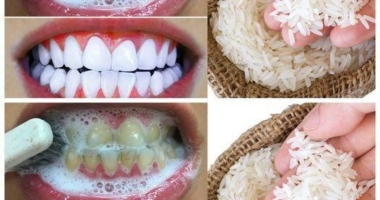Scientists at the University of Utah Health have discovered a potential new strategy for treating the leading cause of sudden cardiac arrest in athletes under 35 years old. By restoring normal levels of the protein GJA1-20k, which is underproduced in people with arrhythmogenic cardiomyopathy, researchers were able to correct abnormal heart rhythms in mice. The protein is necessary for heart cells to connect with one another, and its deficiency is responsible for the condition in humans. The study’s findings suggest that restoring GJA1-20k levels could be a game-changer for treating abnormal heart rhythms caused by arrhythmogenic cardiomyopathy. The research may also have implications for treating dangerous arrhythmias linked to common conditions such as those that can develop soon after a heart attack. The researchers noted that although the treatment succeeded in correcting arrhythmias in the mice, they still had heart scarring, which could indicate that arrhythmia and heart scarring can occur independently, and abnormal heart rhythms could be treatable even when the heart is severely scarred.
Researchers from the University of Utah Health have discovered a potential new strategy for treating the leading cause of sudden cardiac arrest in athletes under the age of 35. By restoring healthy levels of a protein called GJA1-20k, which is underproduced in people with arrhythmogenic cardiomyopathy, they were able to correct abnormal heart rhythms in mice. The protein is necessary for heart cells to connect with one another, and its deficiency is responsible for the condition in humans. The study’s findings, published in the journal Circulation Research, suggest that restoring GJA1-20k levels could be a game-changer for treating abnormal heart rhythms caused by arrhythmogenic cardiomyopathy. It could also be useful for treating dangerous arrhythmias linked to common conditions, including those that can develop soon after a heart attack.
Arrhythmogenic cardiomyopathy is a genetic condition in which people are born with normal hearts but develop an irregular heartbeat in their 20s or 30s. These arrhythmias can be life-threatening, raising the heart rate to dangerous levels, and leading to sudden cardiac arrest during exercise in some people. Those diagnosed with the condition are usually advised to restrict their exercise and may need an implantable defibrillator to control their heartbeat. As the disease progresses, the heart muscle becomes fatty and fibrotic, which prevents it from efficiently pumping blood, leading to the need for a heart transplant.
The team of researchers led by Robin Shaw, M.D., Ph.D., director of the Nora Eccles Harrison Cardiovascular Research and Training Institute, and Joseph Palatinus, M.D., Ph.D., an investigator at the same institute and critical care cardiologist at Intermountain Healthcare, studied heart tissue from patients with arrhythmogenic cardiomyopathy who had undergone transplant. They discovered a problem with a protein called Connexin 43, which forms channels between adjacent cells, allowing communication. The team determined that, although the diseased hearts made normal amounts of Connexin 43, it was not in the right location between cells. This was likely due to insufficient levels of the trafficking protein GJA1-20ka, which they knew from prior experiments, prevented the heart’s cells from moving Connexin 43 to the right place.
Dr. Palatinus emphasized that the discovery of the role of GJA1-20ka in arrhythmogenic cardiomyopathy represents a new paradigm for treating heart rhythm disorders. The team’s findings may also have broader implications for the treatment of dangerous arrhythmias linked to more common conditions.
Scientists at the University of Utah Health have identified a new strategy for treating the leading cause of sudden cardiac arrest in athletes under 35 years old. The researchers corrected abnormal heart rhythms in mice by restoring normal levels of a protein called GJA1-20k, which is underproduced in people with arrhythmogenic cardiomyopathy. This genetic condition causes individuals to develop an irregular heartbeat in their 20s or 30s, which can lead to sudden cardiac arrest during exercise.
The team used low doses of gene therapy to bring GJA1-20k levels back to normal in mice with similarities to people with arrhythmogenic cardiomyopathy. They found that this enabled heart muscle cells to transport Connexin 43, a protein necessary for cell communication, to its proper location, thereby restoring the heart’s normal rhythm. Palatinus, the first author of the study, noted that the ease and low dose required to fix the arrhythmias of even an inherited heart disease suggests that the team has identified a critical pathway to stabilize cardiac electrical activity.
The researchers discovered that the lack of GJA1-20ka was responsible for Connexin 43’s improper placement between cells, causing arrhythmias in patients with arrhythmogenic cardiomyopathy. The treatment’s success in mice implies that raising GJA1-20k levels could restore normal heart rhythms in people with the condition. Palatinus suggested that therapeutic protein delivery directly to the heart could be possible for patients. Further research is needed to develop the treatment for clinical use.
Moreover, disruptions in protein trafficking are believed to contribute to arrhythmias beyond those caused by arrhythmogenic cardiomyopathy. Palatinus is hopeful that a similar treatment approach could be useful for those conditions as well. It could one day offer patients and doctors an alternative to the ion channel-blocking drugs currently used to treat many arrhythmias, which can slow the heart and cause new rhythm problems for some patients.
Although the treatment succeeded in correcting arrhythmias in the mice, they still had heart scarring, a symptom of a different underlying condition. However, Palatinus noted that this was a positive result, indicating that arrhythmia and heart scarring could occur independently, and abnormal heart rhythms could be treatable even when the heart is severely scarred. The findings, published in the journal Circulation Research, may also have broader implications for the treatment of dangerous arrhythmias linked to other common conditions.
Don’t miss interesting posts on Famousbio









